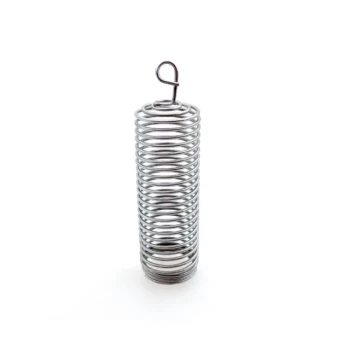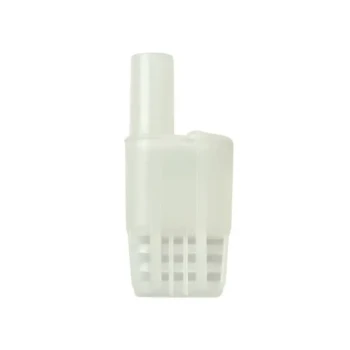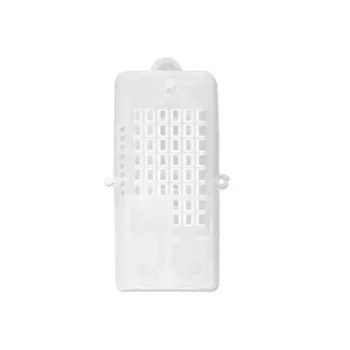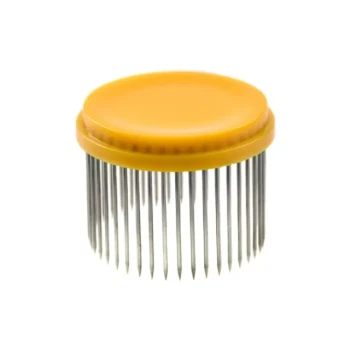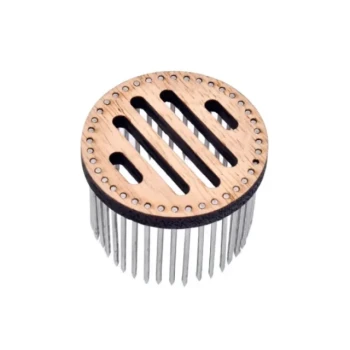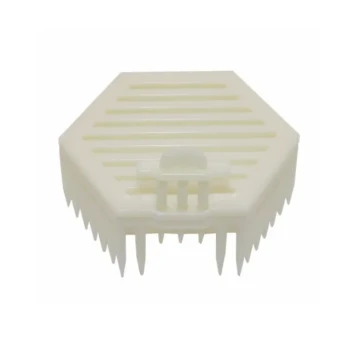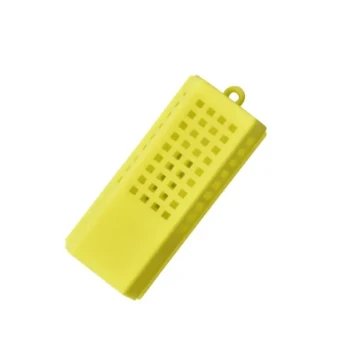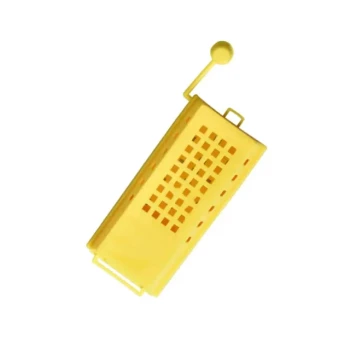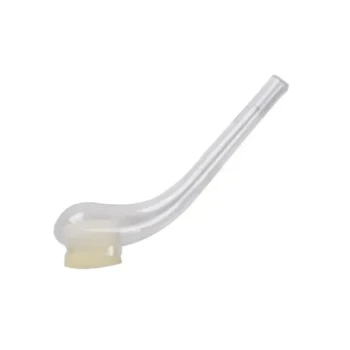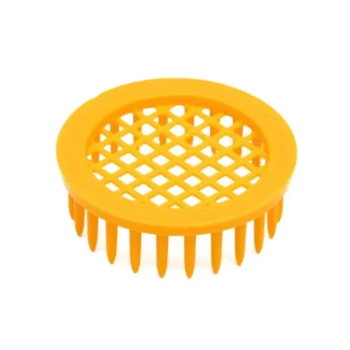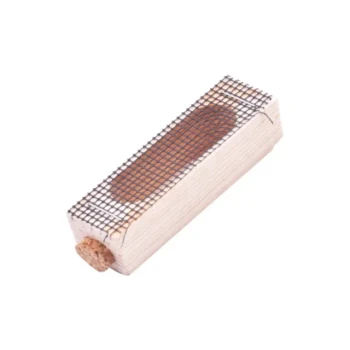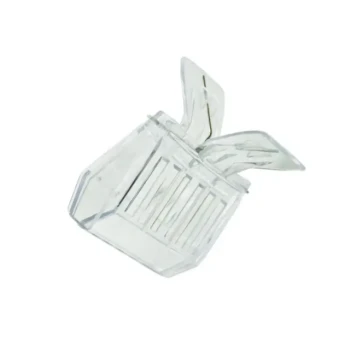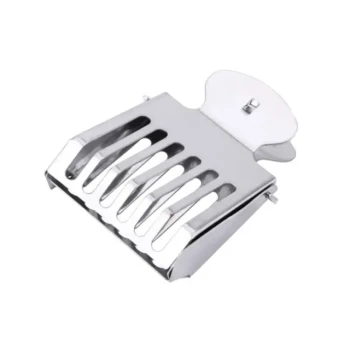The placement of the queen cage is a critical step that directly influences whether a colony accepts or rejects its new queen. The cage should be installed between two frames in the center of the hive's bottom-most box, also known as the brood chamber. Secure the cage so the candy-filled opening faces upwards, allowing the bees to slowly release her.
The core objective is not just to place the cage, but to facilitate acceptance. By positioning the new queen in the heart of the brood nest, you expose her pheromones to the highest concentration of young, receptive nurse bees, maximizing the chances of a smooth introduction.
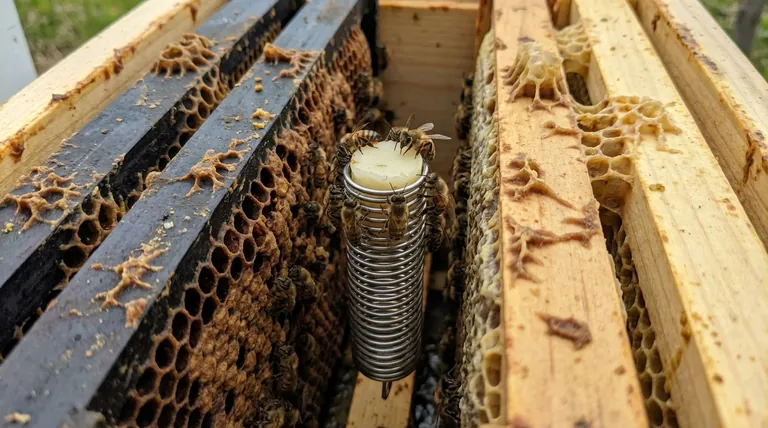
Why Placement is a Matter of Colony Psychology
A honey bee colony is a superorganism with a powerful collective identity, defined largely by the queen's unique pheromones. Introducing a new queen is like introducing a foreigner into a tightly-knit family; it must be done with care and patience.
The Purpose of the Queen Cage
The cage acts as a slow-release mechanism. It protects the new queen from the colony's initial defensive reaction while allowing her scent to permeate the hive.
As the worker bees interact with her through the screen and consume the candy plug, they gradually acclimate to her presence and begin to accept her as their own.
The Brood Nest: The Center of Acceptance
The bottom box of the hive is the brood nest, where the queen lays eggs and nurse bees care for the young. This is the heart of the colony.
Placing the cage here ensures the new queen has maximum contact with these younger nurse bees, who are far more likely to accept a new queen than older, foraging bees.
A Step-by-Step Guide to Correct Placement
Proper technique is simple but essential. Rushing this step or placing the cage in the wrong location is the most common reason for introduction failure.
Step 1: Locate the Central Frames
Gently open the hive and remove a few frames from the center of the bottom brood box. The ideal spot is between two frames that contain emerging brood (sealed pupae), as this guarantees the presence of nurse bees.
Step 2: Secure the Cage to a Frame
Press the queen cage slightly into the wax comb of one of the central frames. This creates a small indentation that helps hold it in place.
For added security, wrap a rubber band vertically around the entire frame and slide the cage behind it. A thumbtack can also work, but a rubber band is generally more secure and avoids damaging the frame.
Step 3: Orient the Candy Plug Upwards
This is a non-negotiable step. The cage must be positioned so the candy tube is facing up or, at a minimum, horizontally.
If the candy plug faces down, any attendant bees that die inside the cage can fall into the tube and block the queen's exit, trapping and killing her. An upward orientation ensures a clear path.
Step 4: Reassemble the Hive
Carefully push the frames back together, ensuring there is enough space for the bees to move around the cage freely. They need full access to the screen to feed and tend to the new queen. Close the hive and leave it undisturbed for several days.
Common Pitfalls to Avoid
Understanding what can go wrong is as important as knowing the correct procedure. Avoid these simple mistakes to ensure a successful requeening.
Pitfall: Placing the Cage in a Honey Super
Never place the queen cage in an upper box (a honey super). These boxes contain primarily older foraging bees and honey stores, not brood. The queen will be isolated from the nurse bees, and her chances of acceptance will drop dramatically.
Pitfall: A Downward-Facing Candy Plug
As mentioned, this is a critical error. A blocked exit tube is a preventable and heartbreaking way to lose a new queen. Always double-check that the candy is oriented upwards before closing the hive.
Pitfall: Checking on the Hive Too Soon
Give the colony at least 3-5 days, and ideally a full week, to release the queen on their own terms. Opening the hive too early can cause stress and disrupt the delicate process of acceptance, potentially causing the bees to turn on her.
Making the Right Choice for a Successful Introduction
Your goal is to create the perfect conditions for the colony to welcome its new leader. The placement of her cage is your first and most important action in that process.
- If your primary focus is maximum acceptance: Place the cage directly between two frames of emerging brood in the center of the lowest hive body.
- If your primary focus is cage security: Use a large rubber band wrapped vertically around a central frame to hold the cage firmly in place.
- If your primary focus is queen safety: Always ensure the candy plug is facing upwards to prevent her exit from being blocked.
By carefully controlling the introduction, you give the colony the time and exposure it needs to embrace its new queen, ensuring its future health and productivity.
Summary Table:
| Placement Goal | Key Action | Reason |
|---|---|---|
| Maximize Acceptance | Place between central frames in the bottom brood box. | Exposes queen to young, receptive nurse bees. |
| Ensure Queen Safety | Orient candy plug facing upwards. | Prevents dead bees from blocking the exit tube. |
| Secure the Cage | Use a rubber band wrapped around a frame. | Holds the cage firmly in place without damage. |
Ensure every queen introduction is a success with the right equipment from HONESTBEE.
We supply commercial apiaries and beekeeping equipment distributors with high-quality, durable supplies designed for professional beekeeping operations. From secure queen cages to essential hive tools, our wholesale-focused offerings help you manage your colonies efficiently and profitably.
Let's discuss your supply needs. Contact our team today to request a quote or learn more about our product range.
Visual Guide
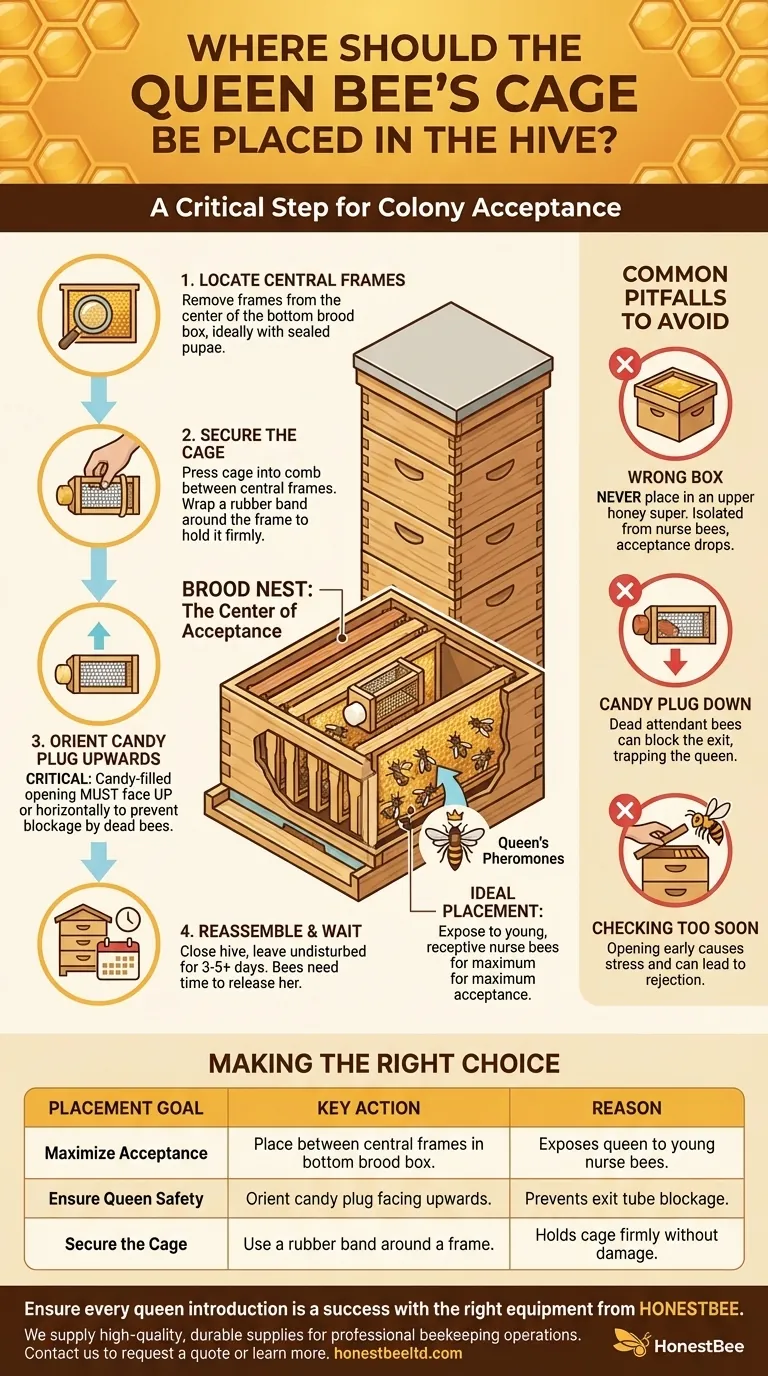
Related Products
- Durable Galvanized Steel Spring Queen Bee Cage
- Multi-Function Queen Roller Cage and Catcher
- Professional Multi-Functional Queen Bee Cage
- Professional Round Push-In Queen Cage with Metal Tines
- Premium Wood and Steel Push In Queen Cage
People Also Ask
- How should a queen cage be maintained over time? Ensure Queen Introduction Success
- When are queen cages typically used in beekeeping? Ensure a Successful Queen Introduction
- Where can beekeepers purchase queen cages? Choose the Right Tool for a Successful Introduction
- What is the importance of correctly removing the queen cage in beekeeping? Ensure Colony Success
- How should you remove the queen cage from the hive? Ensure a Successful Queen Introduction
